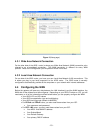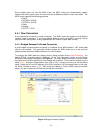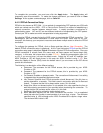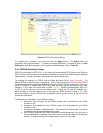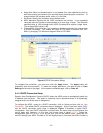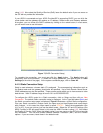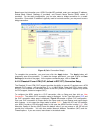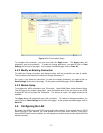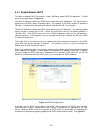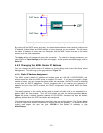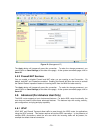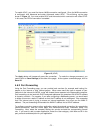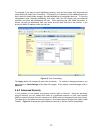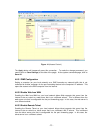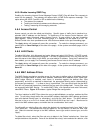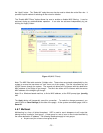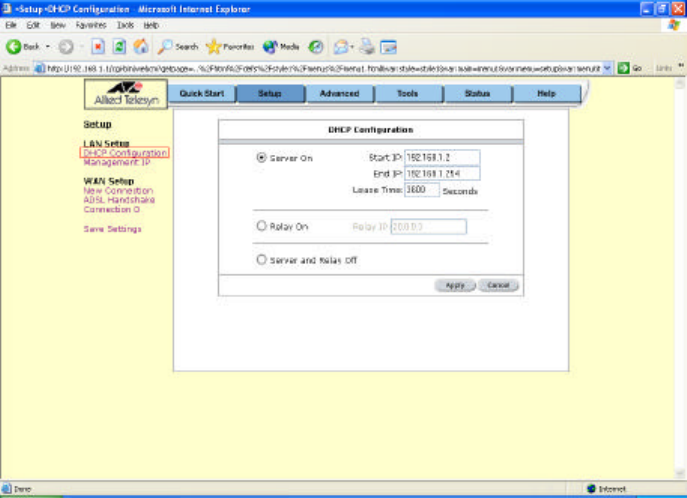
- 18 -
4.5.1 Enable/Disable DHCP
To enable or disable DHCP, click setup. Under LAN Setup, select DHCP Configuration. This will
bring up the page shown in Figure 10.
The Start IP Address is where the DHCP server starts issuing IP addresses. This value must be
greater than the ADSL router IP address value. For example, if the ADSL router’s IP address is
192.168.1.1 (default) then the starting IP address must be 192.168.1.2 (or higher).
The End IP Address is where the DHCP server stops issuing IP addresses. The ending address
cannot exceed a subnet limit of 254. Hence, the maximum value for our default gateway is
192.168.1.254. If the DHCP server runs out of DHCP addresses, users will not get access to
network resources. If this happens, you can increase the Ending IP address (to the limit of 255)
or reduce the lease time.
The Lease Time is the amount of time a network user will be allowed connection to the ADSL
router with their current dynamic IP address. The amount of time is in units of minutes; the
default value is 3600 minutes (60 hours).
Note: If you change the start or end values, make sure the values are still within the same subnet
as the gateway’s IP address. In other words, if the gateway’s IP address is 192.168.1.1 (default)
and you change the DHCP start/end IP addresses to be 192.168.2.2/192.168.2.100, you will not
be able to communicate with the ADSL router if your computer has DHCP enabled.
Figure 10 (DHCP Configuration)
In addition to the DHCP server feature, the ADSL router supports the DHCP relay function.
When the ADSL router is configured as DHCP server, it assigns the IP addresses to the LAN
clients. When the ADSL router is configured as DHCP relay, it is responsible for forwarding the
requests and responses negotiating between the DHCP clients and the server. See Figure 11.



